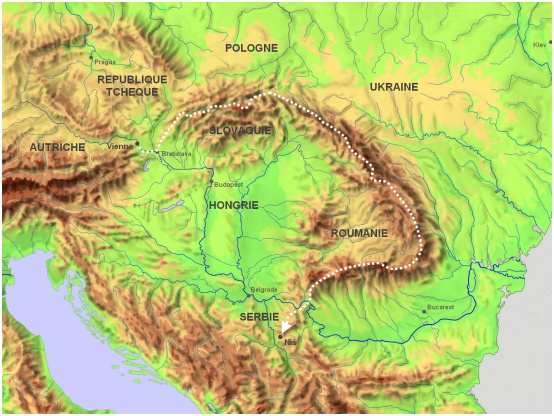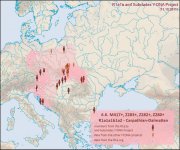There are no White Croats in Poland. There is no region in Poland with this name either.
You can only find White Croatia on Austro-Hungarian maps, because it was their invention to place it in Malopolska, around Krakow.
Mother of Pope Ivana Pavla II is from the south Poland declared as White Croat...
Croatian main haplotype
I2a1b2a1a3 A356/Z16983 has origin in the southern Poland....
R1a Z280 haplotype which has a majority of Croats with R1a has a large percentage in southern Poland....
It is assumed that Porphyrogenitus mentioned Croats in this area...
Near the town
Lviv in southwest Ukraine have been found cities of White Croats, Ukrainian children come there with school trips for exploring the life of White Croats....
Writer Bruno of Querfurt even stated that Red Croatia was neighbour to Kievan Rus' and White Croatia, as well as that Croats were found between the Bug and Dniester rivers.
The most important and earliest major manuscript with information on early Rus' history and of the East Slavs is Nestor's Primary Chronicle, written in the late 11th and early 12th centuries. It is a history of Kievan Rus' from about 850 to 1110 and lists the twelve Slavic tribal unions who by the 9th century settled between the Baltic Sea and the Black Sea. These tribal unions were Polans, Drevlyans, Dregovichs, Radimichs, Vyatichs, Krivichs, Slovens, Dulebes (later known as Volhynians and Buzhans), White Croats,
Some of the north eastern Croats are mentioned as living near the Sozh river which lies within Russia, Belarus and Ukraine, as well as the Oka river which is near modern day Moscow. Remnants of Croats that did not migrate south to today's Croatia circa. 6th and 7th centuries.
In 992 Russian prince Vladimir the Great during his south and western campaigns went against the Croats who still remained near the western border of modern day Ukraine, as well as the Polish marches and other Slavic peoples. Those Croats were also still pagan as Vladimir had just only very recently converted to Christianity.
..Leaving Igor in Kiev, Oleg attacked the Greeks. He took with him a multitude of Varangians, Slavs, Chuds, Krivichians, Merians, Polianians, Severians, Derevlians, Radimichians, Croats, Dulebians, and Tivercians......All these tribes are known as Great Scythia by the Greeks.......The Russians hung their shields upon the gates as a sign of victory, and Oleg then departed from Constantinople...So Oleg came to Kiev, bearing palls, gold, fruit, and wine, along with every sort of adornment....



